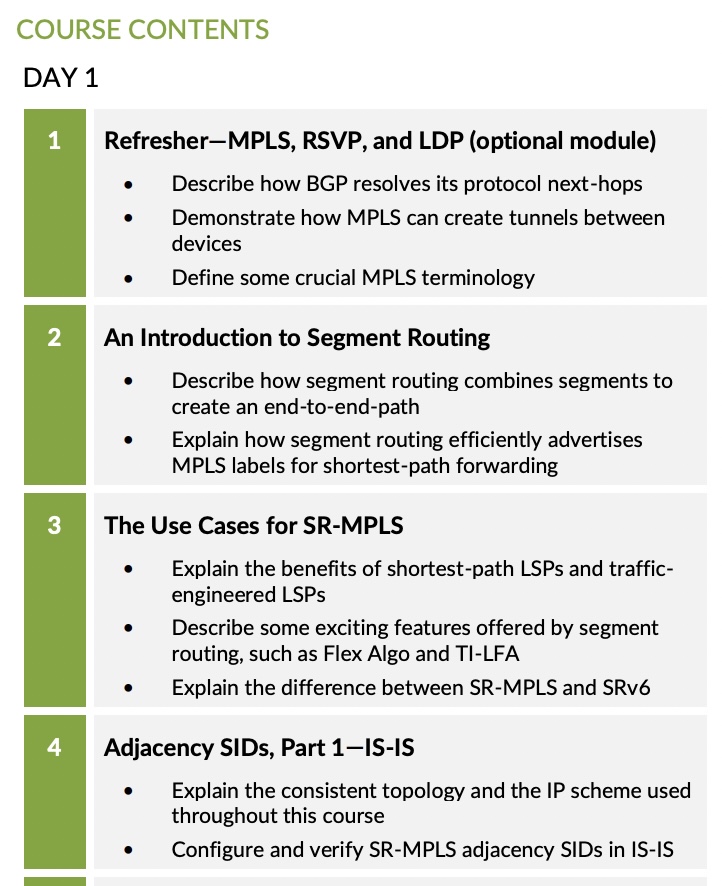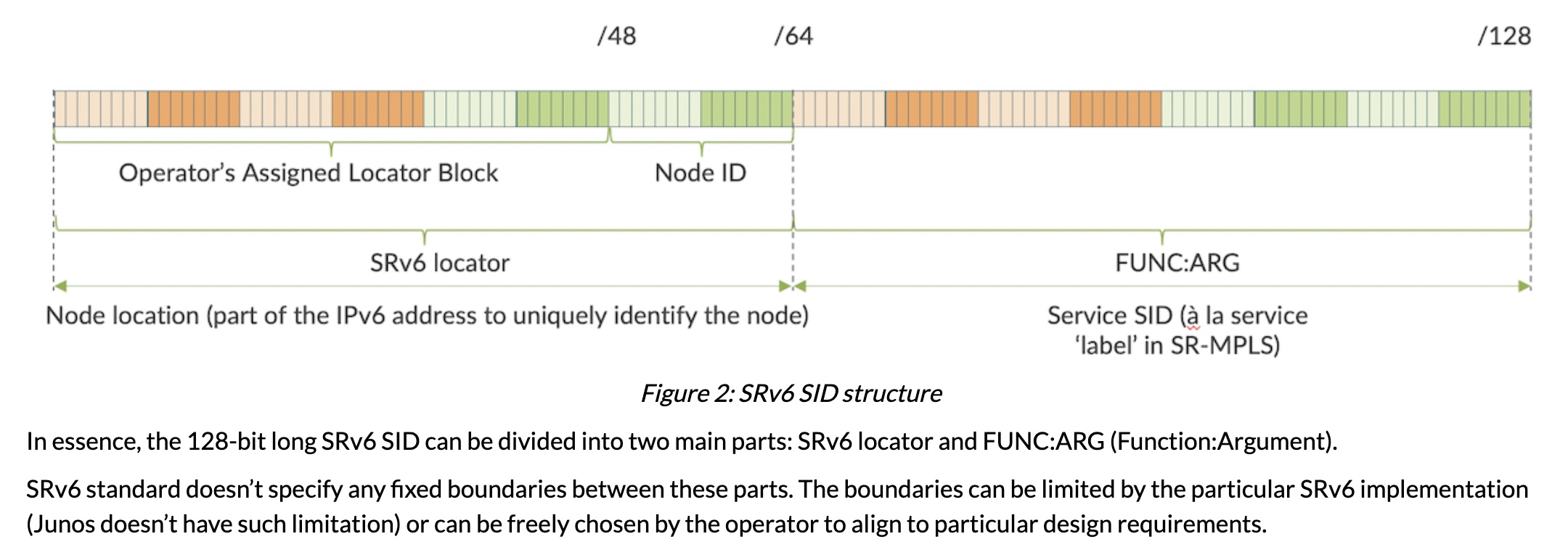My New SR-MPLS Course, and Krzysztof’s SRv6 Blogs

Recently I’ve been hard at work writing a four-day instructor-led course dedicated to SR-MPLS.
After many months of work, I’m delighted to say that it’s now live!
We’ve renamed the course to Junos Segment Routing for MPLS. It’s a massively expanded update to the previous version. 100% brand new content, all written by me, your boy Crepes Parkster.
(I say I wrote it, but my Mum helped me with the first few sentences. But I did all the coloring-in myself.)
Click here to see a PDF with the day-by-day breakdown of modules, and then click here to see the dates that you can attend the course.
Over the four days you’ll learn about node/prefix/anycast/adjacency SIDs, TI-LFA for backup paths, static traffic engineering, CSPF traffic engineering with dynamic paths, Flex Algo for multi-topology routing, color-tagged LSPs, the BGP color community, Classful Transport, and On-Demand Next-Hops.
There’s also ten (ten!) hands-on lab modules for you to play with.
It doesn’t end there. When you attend the course (written by me, Cress Parkour), you’ll also get a book that I (Crisps Packet) wrote. Along with the slides, it contains well over 150,000 words that will help you to review the topics once you’ve completed the course, along with some self-study modules for you to tackle once you’re fully confident in SR.
This is a paid course. Talk with your account manager – you might well have some training credits that can give you access to this course, or indeed to exchange for an All Access Training Pass for unlimited training for an entire year. (I get no commission or benefits if you sign up – I’m just letting you know some options.)
I couldn’t have created this course without substantial help from many colleagues – most notably Julian Lucek, Anton Elita, and Krzysztof Szarkowicz, who were all endlessly patient with my questions. A very public thank you to all three of you!
You know me – I’m an MPLS boy. That’s why I wrote a two-part guide to the very basics of SR-MPLS for you. Part 1 is here, and Part 2 is here.
But for those people who want to know about SRv6, m’colleague Krzysztof has recently written not one, not two, but five blog posts covering this topic. Perhaps there’s even more posts by the time you read this. As readers of the book MPLS in the SDN Era would expect from him, these blogs are absolutely brilliant.

Part 1 is here, covering locators and end-SIDs.
Part 3 covers summarisation in multi-domain SRv6.
Part 4 explains how the MPLS VPN label has been repurposed to carry end-dt4-sid or end-dt6-sid info (the SIDs that bind a packet to a specific VPN routing table).
Part 5 covers inter-AS option C.
I always appreciate how Krzysztof is able to choose the correct order in which to reveal information within a post. This is a shockingly rare skill among writers and educators in networking. For example, many books and posts start with a huge dump of all the SRv6 SID types, or an analysis of the SRH (the segment routing header). Crucial topics, for sure – but it can be overwhelming. By contrast, Krzysztof’s posts start with a configuration that creates a single shortest-path SRv6 SID in the destination address field (in other words, without an SRH), and then use the SID for an L3VPN. This gets you straight onto the CLI to configure and verify the results, without worrying about a lot of theory that you don’t even need until you start considering traffic engineering or TI-LFA.
Give his posts a read. Regardless of your opinions on SRv6, you’ll have no doubt on the technology by the time you’re finished.
(I’m currently writing a self-study module on SRv6 that will be given as a free update to the SR-MPLS course. Don’t be surprised if my module ends up with “heavy influence” from these blog posts, lol.)
If you attend the SR-MPLS course, drop me an email and let me know what you thought. All feedback, good or bad, is always appreciated.





This is fantastic! See you at the course!
I attended this course last week. It was excellent and really well written. Beware, there is a lot of material and labs, and I found myself doing quite a bit of re-reading and finishing labs in the evening.
Lol yeah – there’s a lot to squeeze in to those four days. I’m really happy to hear that you thought it was excellent. Thank you very much!